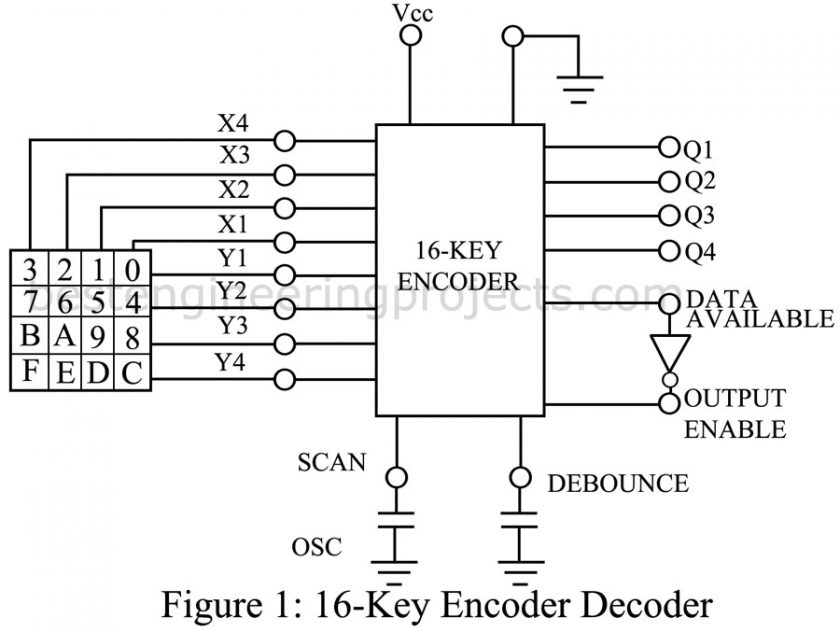In the article “16-Key Encoder Decoder IC” we will discuss about encoder IC for a keyboard, its key parameters, application and comments.
Description of 16-Key Encoder Decoder IC
This IC provides all the necessary logic to fully encoder a keyboard consisting of 4 x 4 single-pole, single-throw (SWST) switches. An internal debounce circuit is provided which requires only one external capacitor. Provision to eliminate the key “rollover” effect is also included. As illustrated in figure 1 connections are made to the four rows and to the four columns (X and Y) of the keyboard. An internal oscillator, tuned by one capacitor, generates the signals required to scan the X and Y inputs to determine when one of the keys is depressed.
The output to the data bus consists of four lines, representing the binary equivalent to the hexadecimal (16) key input. The “data available” line indicates to the remote circuitry that data are available, and the inverting amplifier is provided to connect that signal back to the “output enable” terminal. When a “handshake” interface system is used, an external flip-flop is required to indicate the data available information and then rest when the output enable response is received from the remote terminal.
The 16-key encoder IC can also be used with a system clock, in which case the data available and the output enable can be synchronized. The oscillator capacitor used for scanning oscillator can be eliminated and the system clock can be providing the scanning signal as well.
Key Parameters of 16-Key Encoder Decoder IC
The electrical characteristics are essentially the same as those of the particular digital IC family.
- Maximum power dissipation: 500 mW is typical for CMOS devices.
- Propagation delay time: The time required from the detection of an input signal at the encoder until the binary output signal and the data available signal are present. 60 to 80 ns is typical for CMOS devices.
Applications
This type of encoder is used is used whenever numerical input keyboards, particularly 16-key array, are used.
Representative Part Number: Motorola MC14419.
Comments
In addition to the 16-key encoder, other ICs are available to accept different numbers of key inputs. Special ICs for converting the ASCII code from a standard keyboard into the equivalent 7-bit binary number are also available. All of these encoders operate in essentially the same manner as described here.
Check out the article on encoder and decoder IC
